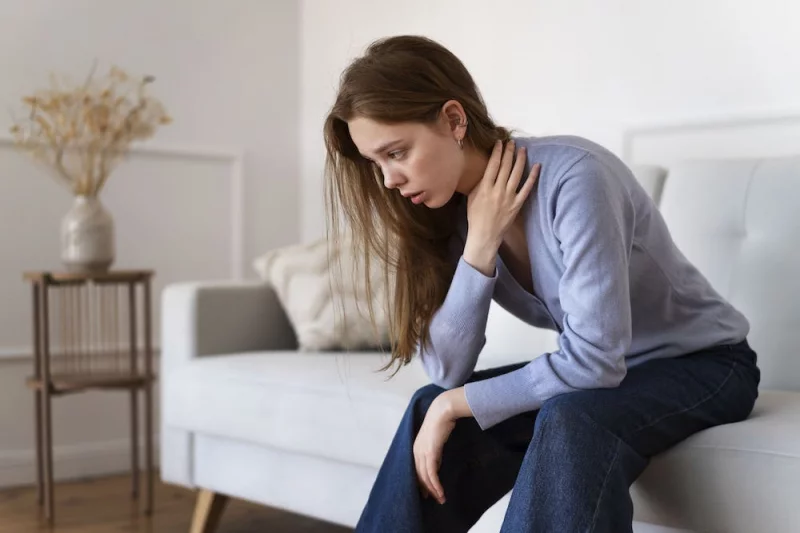6 Major Types of Anxiety Disorders – Which Do You Have?

People who suffer from anxiety disorders experience significant worry or fear. Psychologists have created 6 classifications for each type of anxiety disorder. Learning about which type of anxiety disorder you have can help you understand your condition better and take the right steps towards treatment and recovery sooner rather than later.
What Are Anxiety Disorders?
Anxiety disorders are a group of mental health conditions that affect the way you think, feel, and act. People with anxiety disorders have feelings of fear and dread that are out of proportion to danger or when actual danger is experienced.
Anxiety disorders can cause a lot of different symptoms, and they can be very uncomfortable and difficult to deal with. They may also experience physical symptoms such as racing hearts or headaches. Overall, anxiety disorders are dangerous and harmful if left untreated.
There are many key causes of anxiety disorders. The most common include:
Genetics – Your genes can predispose you to anxiety and affect your reaction to stressful situations.
Brain chemistry – Neurotransmitters and hormones in the brain can affect your feelings of anxiety, fear, and stress.
Environmental factors – Research suggests that stressful life events, such as the death of a loved one, can contribute to the development of an anxiety disorder.
Behavior and lifestyle – Unhealthy lifestyle choices (such as not getting enough sleep) and certain behaviors (such as avoiding dangerous situations) can contribute to the development of an anxiety disorder.
What are the 6 Types of Anxiety Disorders?
People experience anxiety for a variety of reasons. It can be a helpful response to stressful situations, alerting us to danger or challenging circumstances and encouraging us to act. Anxiety disorders are different from general fears and anxieties about specific things.
People who suffer from an anxiety disorder experience intense fear and anxiety that is not proportional to the situation they’re in. These feelings are ongoing, last for at least six months, and interfere with a person’s ability to function in daily life. There are six common types of anxiety disorders. Let’s explore each in more detail.
Generalized Anxiety Disorder
Generalized anxiety disorder (GAD) is a condition characterized by excessive and irrational worry that is sometimes accompanied by physical symptoms, including restlessness, insomnia, muscle tension, and difficulty concentrating. People with GAD are frequently hypervigilant, constantly on the lookout for what could go wrong.
The recommended treatment for generalized anxiety disorder (GAD) is a combination of psychotherapy and medication. Several different types of psychotherapy can be effective in treating GAD, including cognitive-behavioral therapy (CBT), which focuses on helping you learn new ways of thinking and acting that can help you feel less anxious. While medications such as antidepressants can also be helpful in managing GAD, they are not a cure and won’t work unless you are also receiving therapy.

Phobias
A phobia is an irrational fear that makes you avoid certain situations or places. If you have a phobia, you may know that your fear isn’t rational, but you feel it in your gut. Specific phobias are anxieties related to a specific object or situation. They often develop in childhood, adolescence, or early adulthood. Phobias can make it hard to go to school, continue a job, or even get through your day.
There is no specific treatment for phobias. However, there are several ways to treat phobias. The most effective way is through exposure therapy, which involves gradually exposing yourself to the object of your fear while also learning how to relax and control your breathing. Another effective treatment is cognitive-behavioral therapy, which helps you recognize and change the thoughts and behaviors that may be contributing to your fear.
Panic Disorder
Panic disorders are recurrent and unexpected episodes of extreme fear and discomfort that are often accompanied by physical symptoms such as a rapid heartbeat, sweating, trembling, and shortness of breath. People with panic disorder often experience at least one panic attack in their lifetime.
There is no cure for panic disorder, but there are treatments that can help reduce the symptoms. The most effective treatment for panic disorder is cognitive-behavioral therapy (CBT). Other effective treatments include benzodiazepines and selective serotonin reuptake inhibitors (SSRIs).
Social Anxiety Disorder
Social anxiety disorder, a pervasive and frequently overwhelming fear of being judged by others or embarrassed in social or performance situations, can lead to avoidance or discomfort in a variety of social settings. You may also feel anxious in situations unrelated to others, such as giving a speech or eating in front of others.
With the right treatment, most people with social anxiety disorder can be symptom-free. The most effective treatment is a type of cognitive-behavioral therapy called “cognitive behavioral therapy”. This combines medication and psychotherapy to help you and your therapist decipher the cause of your social anxiety and how to deal with it.
OCD And PTSD
Obsessive-compulsive disorder (OCD) and posttraumatic stress disorder (PTSD ) are debilitating conditions that can have a significant impact on the lives of those who suffer from them. Both involve persistent and recurring thoughts, feelings, and behaviors that can be extremely debilitating and can interfere with daily functioning.
The best treatment for OCD and PTSD depends on the individual person and their specific symptoms and experience. There are a variety of different treatment options that can be used to help improve symptoms and quality of life, including therapy, medication, and self-help techniques.
Separation Anxiety Disorder
Separation anxiety disorder is diagnosed when an individual feels extreme anxiety when separated from those they rely on, usually a parent. This intense fear may begin in early childhood and continue throughout adolescence and adulthood. People with separation anxiety disorder experience symptoms like physical distress, nausea, restlessness, and crying when they are separated from those they are attached to.

The best treatment for separation anxiety disorder is cognitive behavioral therapy (CBT) and medication. CBT teaches you how to deal with the painful emotions and thoughts that come with separation anxiety disorder, while medication can help you relax and cope with symptoms more easily.
Conclusion
It’s more important to know which type of anxiety you or your loved one has because there are many different types of anxiety disorders and each has its own specific symptoms and treatments. If you are concerned that you or someone you care about is suffering from an anxiety disorder, the most important thing to do is talk to a healthcare professional. Talking to a healthcare professional can help you figure out if one or more of these disorders might be causing your symptoms and how best to treat them.